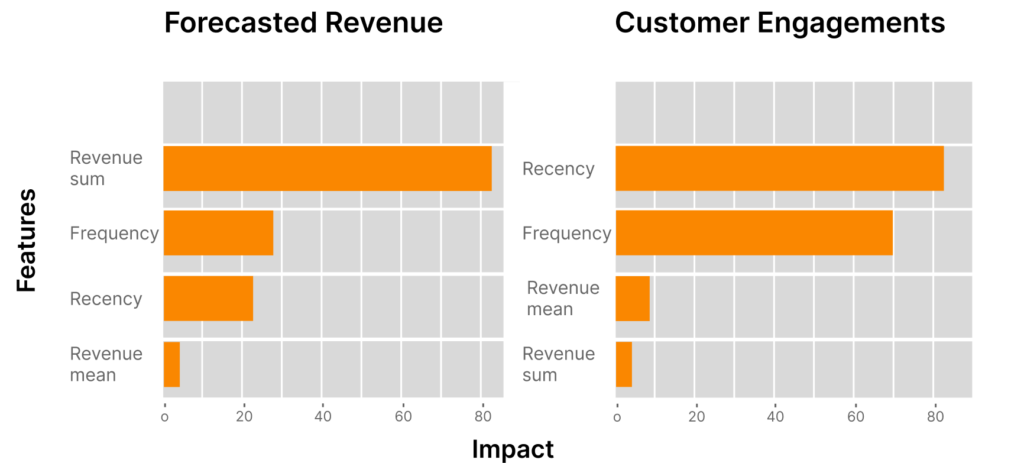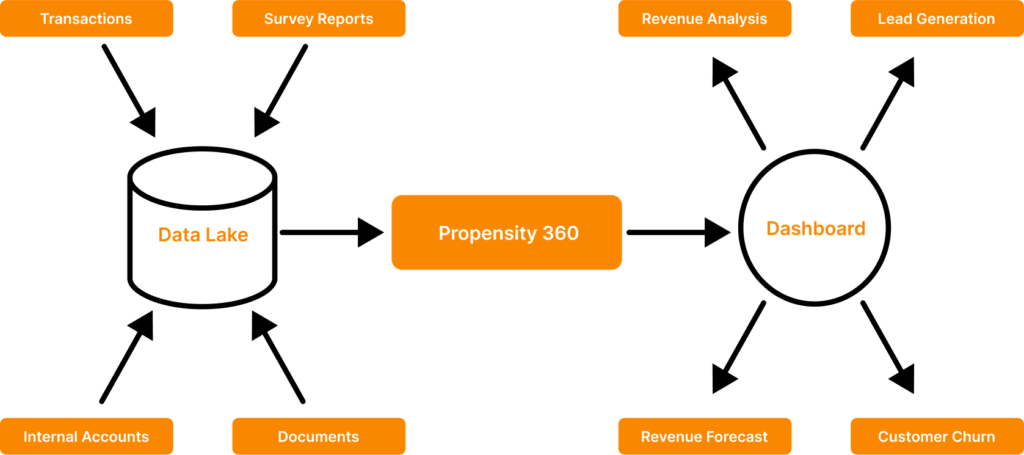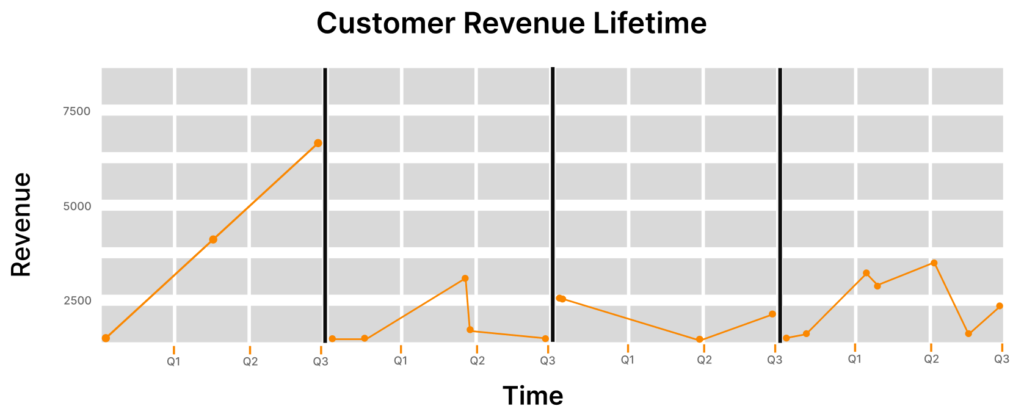Our customer is one of the leading Banking firms in Nordics which offers multichannel products and services. They wanted to build a propensity model to understand their customer’s revenue life cycle and find the potential customer segments to upsell their additional services and products.
Requirements
- Understand customer demographics and how they are changing at a macro level.
- Robust to market changes and require less historical data of customers.
- Personalized in-depth ROI analysis for B2B customers to forecast and predict their revenue in affiliated branch accounts.
- Understanding the customer’s behavioral analysis based on the RFM parameters.
- Identify the customer segments where targeted marketing can be applied.
- Predict the campaign performance for the new products or services on clientele.
Challenges
- The complexity of the data leads to additional work in formulating and structuring the model to perform accurately
- Fulfilling different needs of customers based on business needs involves a huge volume of data and a longer processing time.
- Adhering to Data Governance policies to set the policy standards as per GDP.
- Modeling the use cases to support multiple cloud platforms and on-premises systems.

Solution Design
- The objective is to formulate and combine the different use cases such as Lead Conversion, Propensity to engage, Customer Lifetime Value, and Churn rate forecasting.
- To achieve an AI solution, we have processed millions of transactional, survey, and Ticket data to create multiple machine learning models to predict and forecast outcomes.
- To handle the huge volume of complex input data, we built a big data pipeline using specifically designed data structures on Apache Spark and the Hadoop platform which can import data from several sources.
- After structuring the data, we develop different KPIs depending on the business and customer modeling needs.
- We use clustering algorithms to differentiate customers on basis of characteristic features.
- The recency of transactions over a defined period, Frequency of the usage of products or services, and Monetary value of the transaction.
- We also account for clients’ purchase behavior, time taken to purchase, spending patterns, and social similarity groups.
- We employed multi-level ensemble modeling techniques to generate data-driven business insights limiting bias from the development team.
- With these insights, we were able to identify client microsegments and forecast the future revenues for individual microclusters, do behavioral analysis and check customer drift.
- We developed user-friendly, easy-to-understand dashboards to analyze observational changes in customer patterns and formulate new marketing strategies which improved ROI.


Business Value Addition
- Performing quasi-statistical experiments to research customer demographics and behavioral analysis to cater to the needs of customers improving customer retention.
- Achieving higher precision, recall, and F1 scores with improved modeling techniques.
- Explainable model outputs and formulating more effective relationships with data points (90% AUC).
- The propensity score matching was effectively applied across almost 90% of the client customer population including new customers, inactive clients, and those with less or close to zero historical data.
- Enhanced conversion rate up to 80% towards consumer product offering and better positioning.
- Cost reduction by 40% by early prediction of churn customers.
- Personalized product offerings tailored using propensity score with a significant increase in customer engagements.
- Detected potential churn and offered better services.
Author: Aniket Anil Chaudhary
Data Science